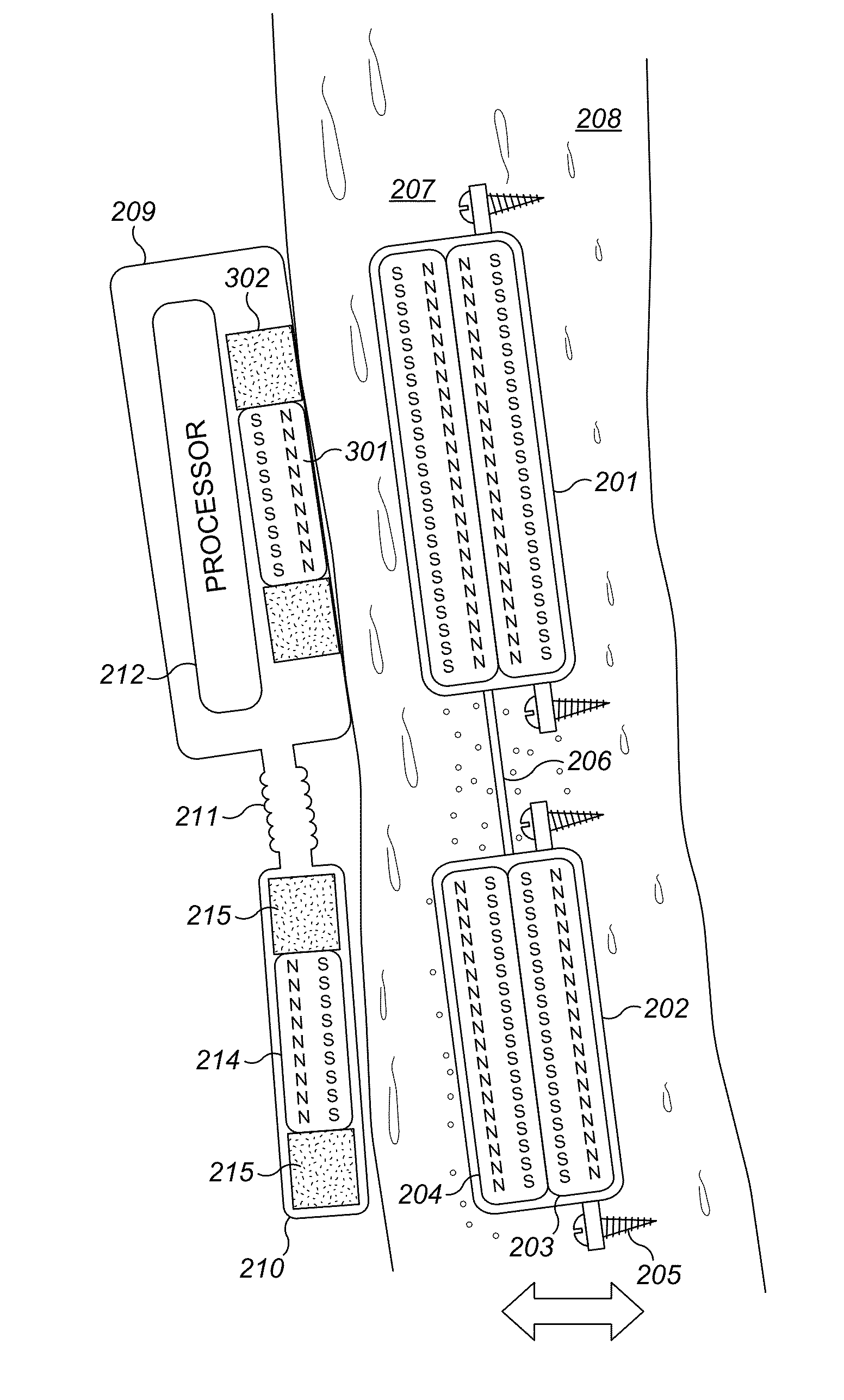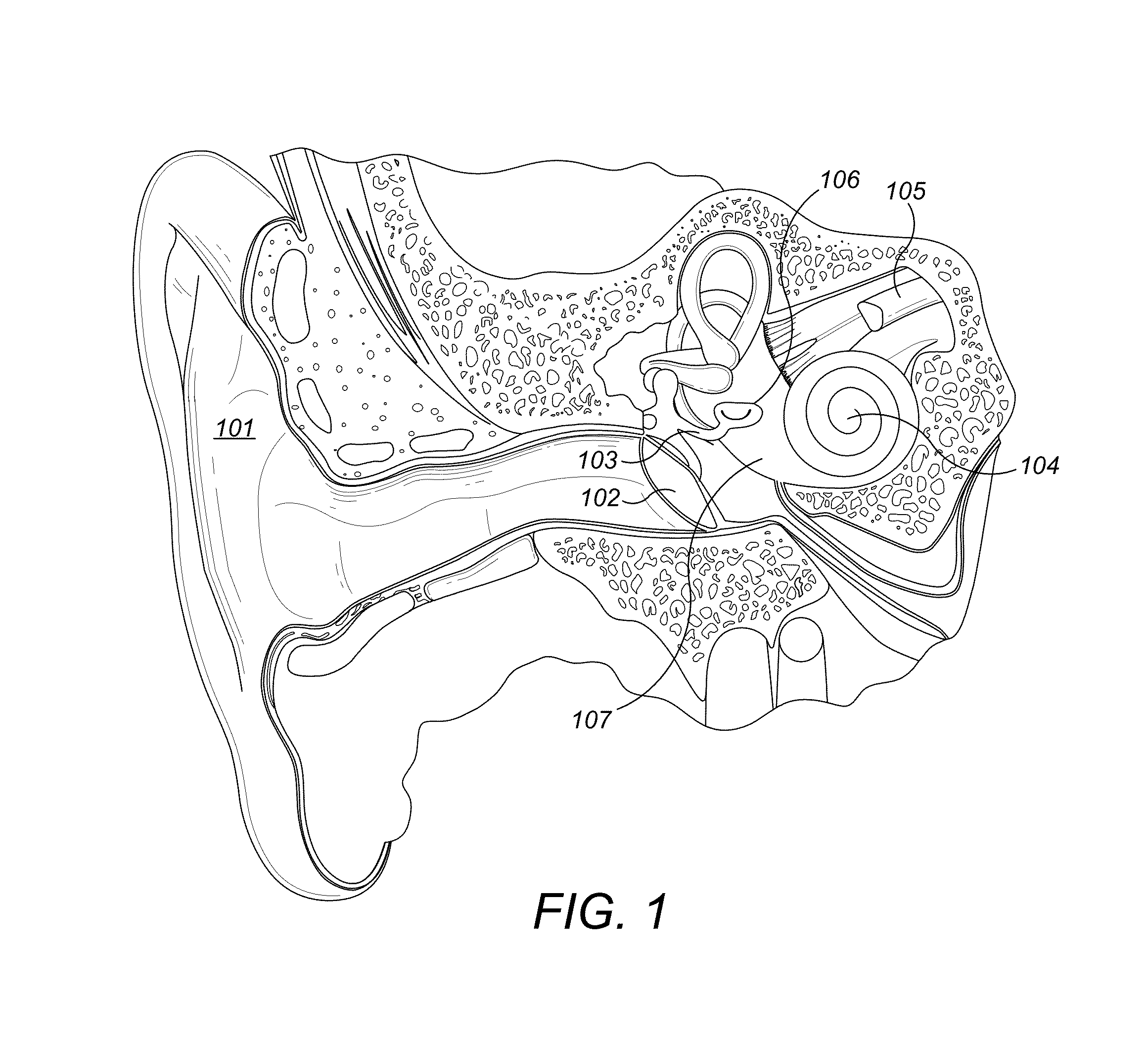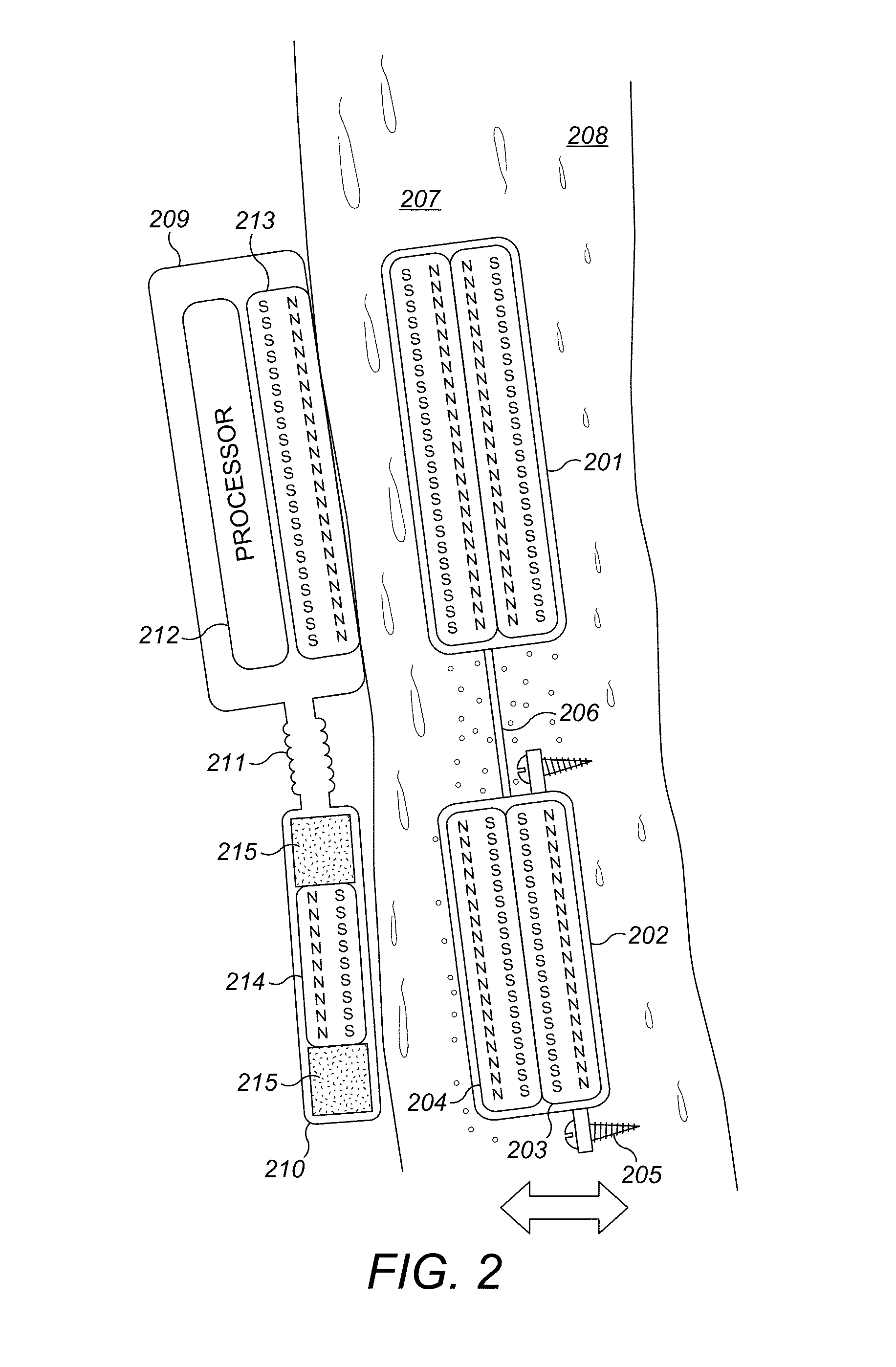Magnet arrangement for bone conduction hearing implant
a bone conduction and implant technology, applied in the field of medical implants, can solve the problems of affecting the normal position of the magnet or the whole implant housing, and damage to adjacent tissue in the patient,
- Summary
- Abstract
- Description
- Claims
- Application Information
AI Technical Summary
Benefits of technology
Problems solved by technology
Method used
Image
Examples
Embodiment Construction
[0018]Embodiments of the present invention are directed to a magnetic arrangement for an implantable hearing prosthesis system which is compatible with MRI systems. FIG. 2 shows a cross-sectional view of an implantable hearing prosthesis arrangement having an implant holding magnet 201 and an implant transducer magnet 202 which are fixable in a common plane beneath the patient skin 207 to underlying skull bone 208. A flexible connector member 206 connects and positions the implant holding magnet 201 and the implant transducer magnet 202 a fixed distance from each other. The implant transducer magnet 202 is fixedly secured to the skull bone 208 by a pair of radially opposed bone screws 205.
[0019]The implant holding magnet 201 and the implant transducer magnet 202 are each enclosed within a titanium housing which contains a pair of internal magnets 203 and 204 in the shape of planar disks that lie in parallel planes which meet along a common junction with repelling like magnetic polar...
PUM
 Login to View More
Login to View More Abstract
Description
Claims
Application Information
 Login to View More
Login to View More - R&D
- Intellectual Property
- Life Sciences
- Materials
- Tech Scout
- Unparalleled Data Quality
- Higher Quality Content
- 60% Fewer Hallucinations
Browse by: Latest US Patents, China's latest patents, Technical Efficacy Thesaurus, Application Domain, Technology Topic, Popular Technical Reports.
© 2025 PatSnap. All rights reserved.Legal|Privacy policy|Modern Slavery Act Transparency Statement|Sitemap|About US| Contact US: help@patsnap.com



